PIN Submits Explained
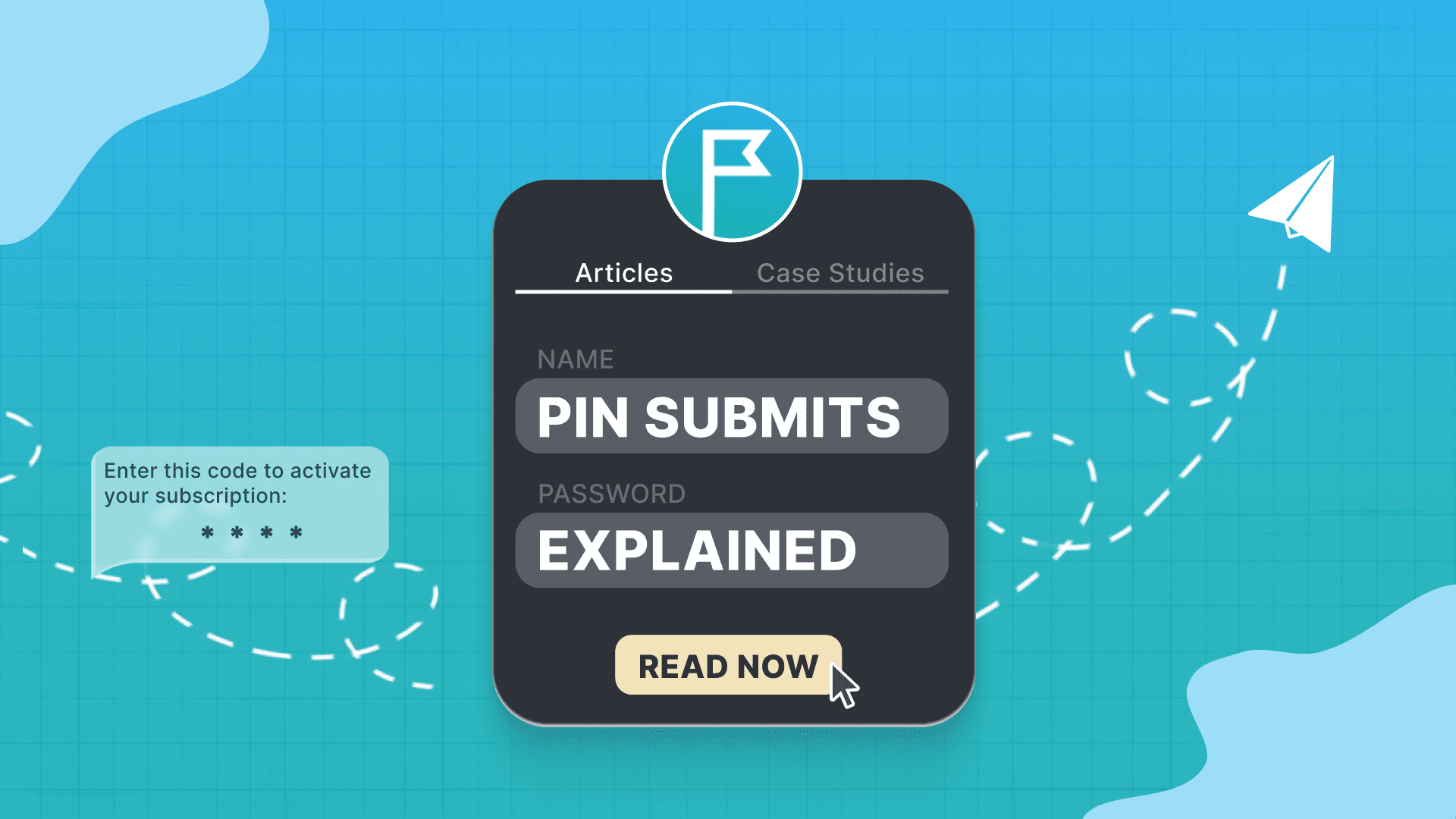
PIN Submit Is a CPA Offer
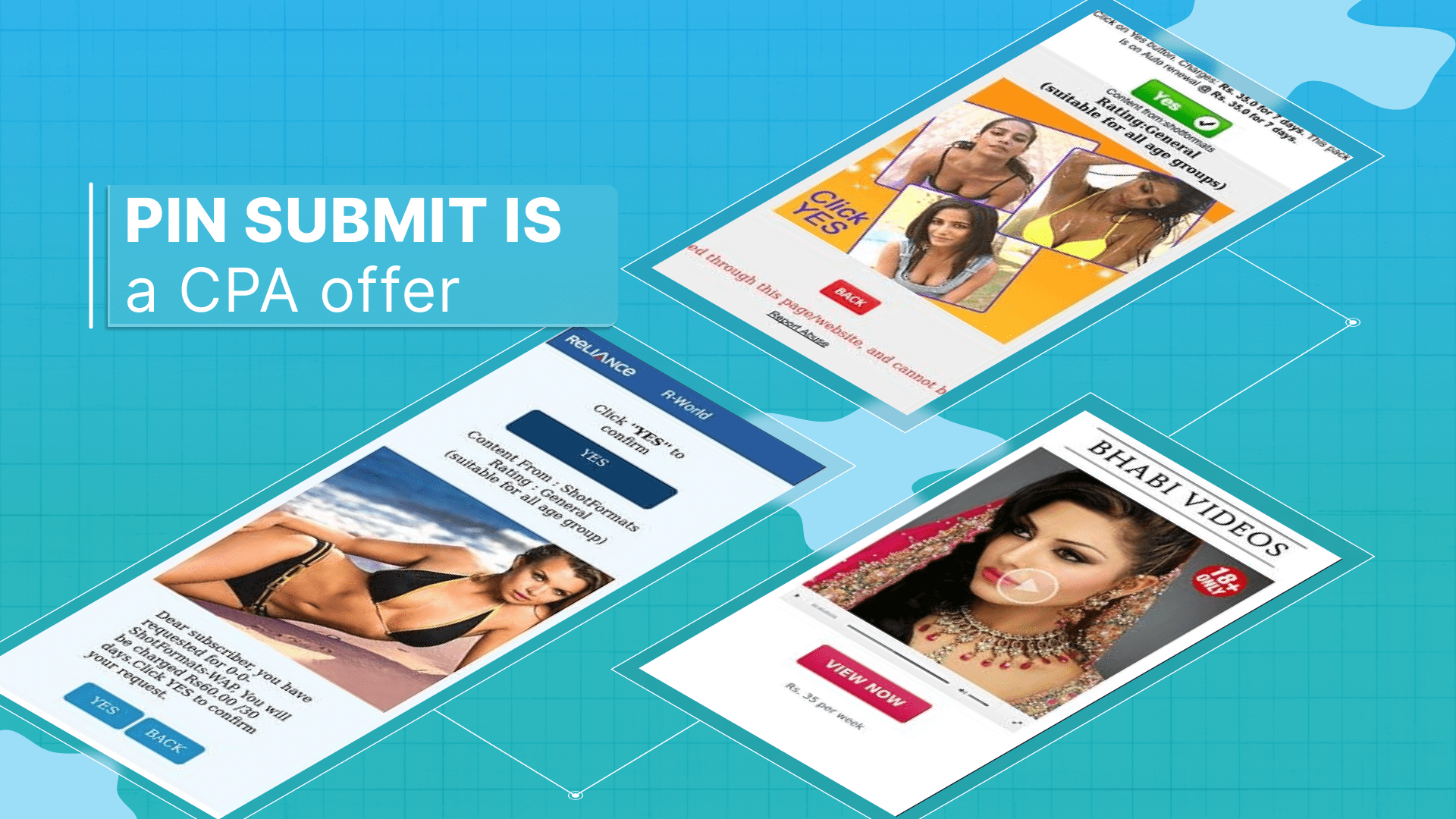
PIN Submit is a type of Cost-Per-Action (CPA) offer in affiliate marketing where users are required to enter a PIN or code to complete a desired action, typically related to mobile subscriptions or services. A typical funnel requires users to provide their mobile phone number and then confirm their subscription or opt-in by entering a PIN code sent to their mobile device.
“Carrier Billing”, “Mobile Content”, “Value Added Services”, “Subscription Services” — the names for PIN Submits are many, but they function more or less the same, at least in the context of affiliate marketing. Some examples of PIN Submits include: antiviruses, wallpapers, adult content, videos, games, astrology, and lotteries.
PIN Submit vs. Other Submits
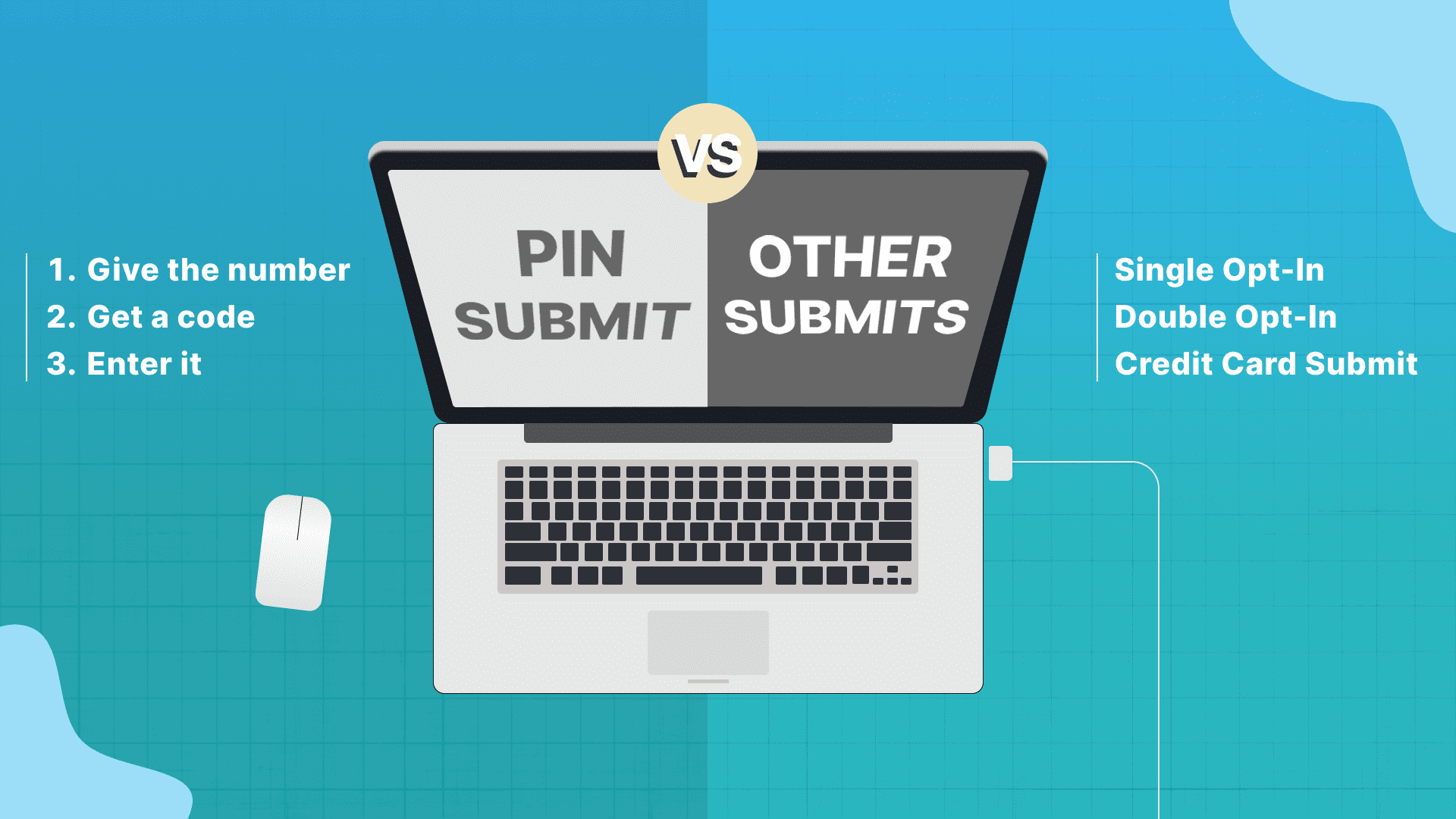
Collecting information about the user involves Single Opt-In, Double Opt-In, PIN Submit, or Credit Card Submit. As a rule of thumb, the further you go, the more actions the user is to take, which creates a moral hazard and gives rise to questionable practices.
That’s the reason why some traffic networks might dislike PIN and CC Submits. However, that’s not the case with HilltopAds, our robust fraud-detection algorithms ensure the quality of traffic. Anyway, back to our submits…
Single Opt-In (SOI): give info once — be added to the mailing list without confirmation. It’s quick and simple, but suffers from fake or invalid email addresses, as there is no verification.
Double Opt-In (DOI): give the email first, then confirm it, using the verification code sent to the email address provided. An extra step that filters out fraud, fake, and bot traffic, but collaterally decreases conversion rate (CR), as the user is to take more steps.
PIN Submit: give the number, get a code, and enter the code to subscribe to paid services. It usually involves mobile content subscriptions, such as ringtones, wallpapers, games, or other digital services.
Credit Card Submit (CC Submit): input credit card information to sign up for a trial, enter sweepstakes, or subscribe to a service. This type of offer pays out the highest affiliate commissions but also requires the greatest financial commitment from the user, as credit card info tends to be bulky. Also, it has stricter compliance requirements, further aggravated by local GEO regulations to protect user’s privacy and security. This is especially the case in Tier-1 countries.
PIN Submit is a simplified CC Submit, since the user doesn’t have to input their credit card number, CVV, full name, and date of expiration — a combination of digits will suffice. This is possible because instead of charging the bank, the product owner bills the mobile carrier. Still, the users are usually smart enough to read that they ought to pay, which makes the offer harder to convert, compared to SOI and DOI alternatives.
Fear not though, we have a few suggestions on how to promote PIN Submits but let’s talk about their standard funnel first.
PIN Submit Funneling

A PIN submit funnel might have a couple of nuances but typically works as follows:
- User engagement: affiliates drive traffic to the PIN Submit offer by promoting it through various marketing channels, such as websites, social media, email newsletters, or mobile advertising.
- User registration: users interested in the offer provide their mobile phone number or other required information to initiate the subscription process.
- PIN verification: once the user submits their information, a PIN code is sent to their mobile device via SMS or other communication method.
- PIN submission: the user receives the PIN code and enters it into the designated field on the offer page to confirm their subscription or opt-in.
- Action completion: after successfully entering the PIN code, the user completes the desired action, such as subscribing to a mobile service, participating in a survey, or accessing exclusive content.
- Affiliate commission: affiliates earn a commission for each successful PIN submission and action completion generated through their referral traffic. The commission rate may vary depending on the specific offer and terms negotiated with the advertiser or affiliate network.
PIN Submits offer a relatively low barrier to entry for users, as they only require a mobile phone number and a simple PIN code confirmation to complete the action. While SOI tend to convert 3–5 times better than PIN Submits (5–20% vs. 1–5% CR), carrier billing compensates for it with significantly higher payouts.
Types of PIN Submits
PIN Submit subscribers are charged directly by their mobile operators, but the users are to subscribe first. There are a few unique flows available.
One-click flow: single and double-click flows can accept WAP users only by definition. When, after reading the terms & conditions, the user clicks on agree and is billed immediately — that’s one-click, which works well for Tier-2 and Tier-3 countries, thanks to milder regulation. One-click flow is one of two types of direct billing, a.k.a. MSISDN flow, the other being…
Two-click flow: adds another confirmation stage to the one-click flow, as a way to meet strict regulatory demands. Both one and two-click flows allow users to subscribe without leaving the landing page or typing in anything — that’s why they tend to convert better among all PIN Submits.
Mobile Originated flow: this is when the user sends an SMS reply to confirm their subscription. This flow involves more steps than the preceding two, which makes it harder to convert the users. However, this flow allows converting desktop users (they still have to use cellphones for confirmation). Moreover, the legislation in some countries allows nothing short of MO flow, e.g., Tier-1 GEO.
Mobile Terminated flow: this is when the confirmation code is sent to the user’s device, and they’re to manually input it on the offer’s page. To some degree, this is a reversed MO flow. Other than that, they are used for the same reasons: to bypass strict legislation and to convert desktop traffic.
Limitations of PIN Submits
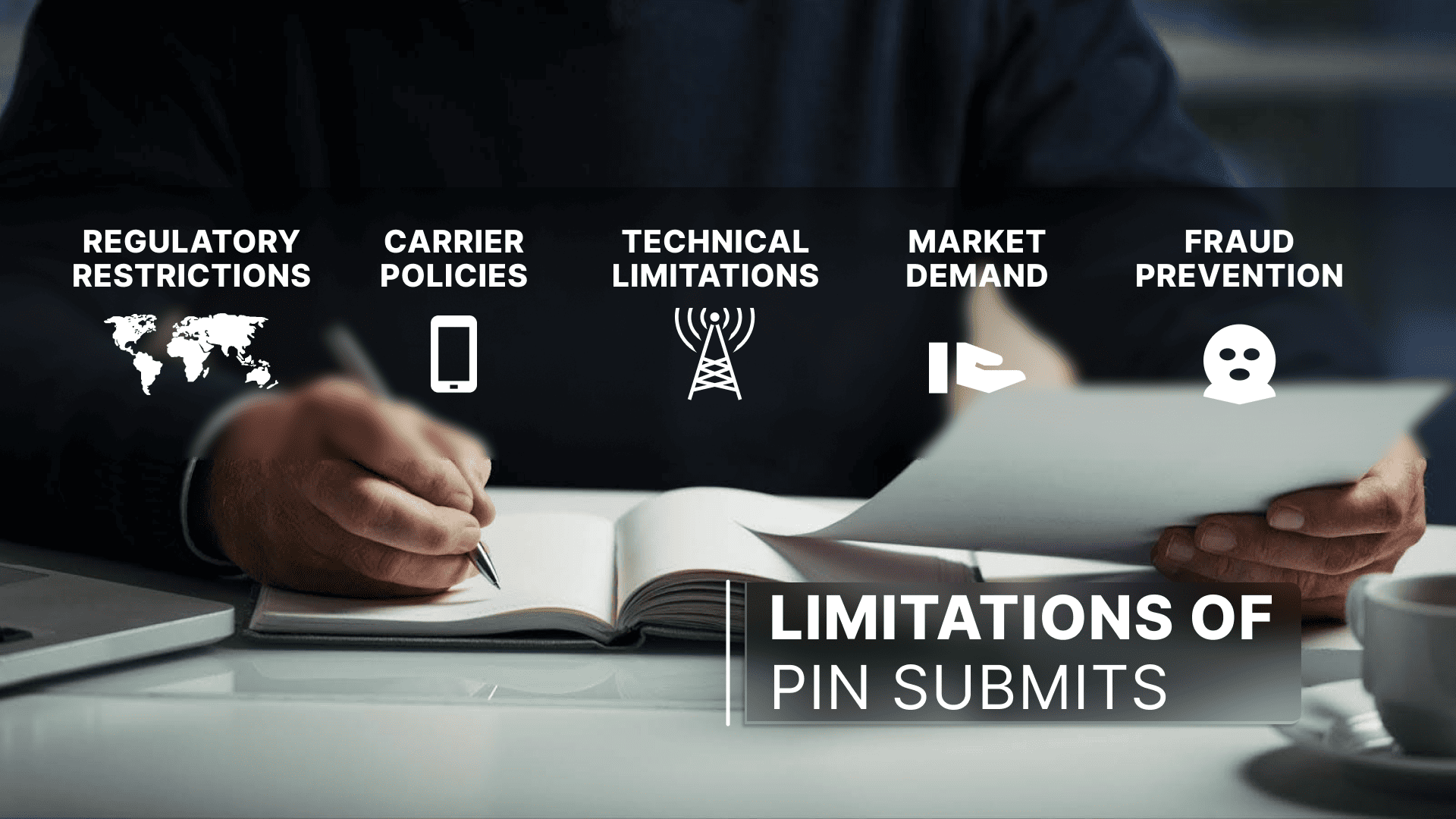
When it comes to promoting PIN Submit offers, there might be regulatory, technical, economical, and even political limitations:
- Regulatory restrictions: in some regions, mobile carriers may be subject to regulatory restrictions that prohibit or limit carrier billing for certain types of transactions, such as adult content or gambling-related services. Regulatory authorities may impose strict guidelines on mobile billing practices to protect consumers from fraud, unauthorized charges, or inappropriate content.
- Carrier policies: mobile carriers themselves may have their own policies and guidelines regarding carrier billing for third-party services. Some carriers may choose not to support billing for certain types of content or services to maintain their brand reputation, comply with industry standards, or mitigate risks associated with fraudulent transactions or customer disputes.
- Technical limitations: carrier billing integration requires cooperation between mobile carriers, payment aggregators, and service providers. Technical limitations or compatibility issues between different carriers' systems or platforms may prevent certain carriers from being billable for specific offers or transactions.
- Market demand: in some cases, mobile carriers may choose not to support carrier billing for certain types of offers or content due to low market demand or limited revenue potential. Carriers may prioritize offering billing options for services that have high demand among their subscriber base or offer greater revenue-sharing opportunities.
- Fraud prevention: mobile carriers may implement strict fraud prevention measures to protect their subscribers and minimize the risk of unauthorized charges or fraudulent activity. This may include restrictions on billing for certain types of services or transactions that are deemed high-risk or prone to abuse.
Affiliates and service providers should carefully review and comply with carrier billing regulations and guidelines to ensure legal compliance and maximize revenue opportunities. Contact your dedicated manager in the affiliate network to get more legal data on the offer.
How to Promote
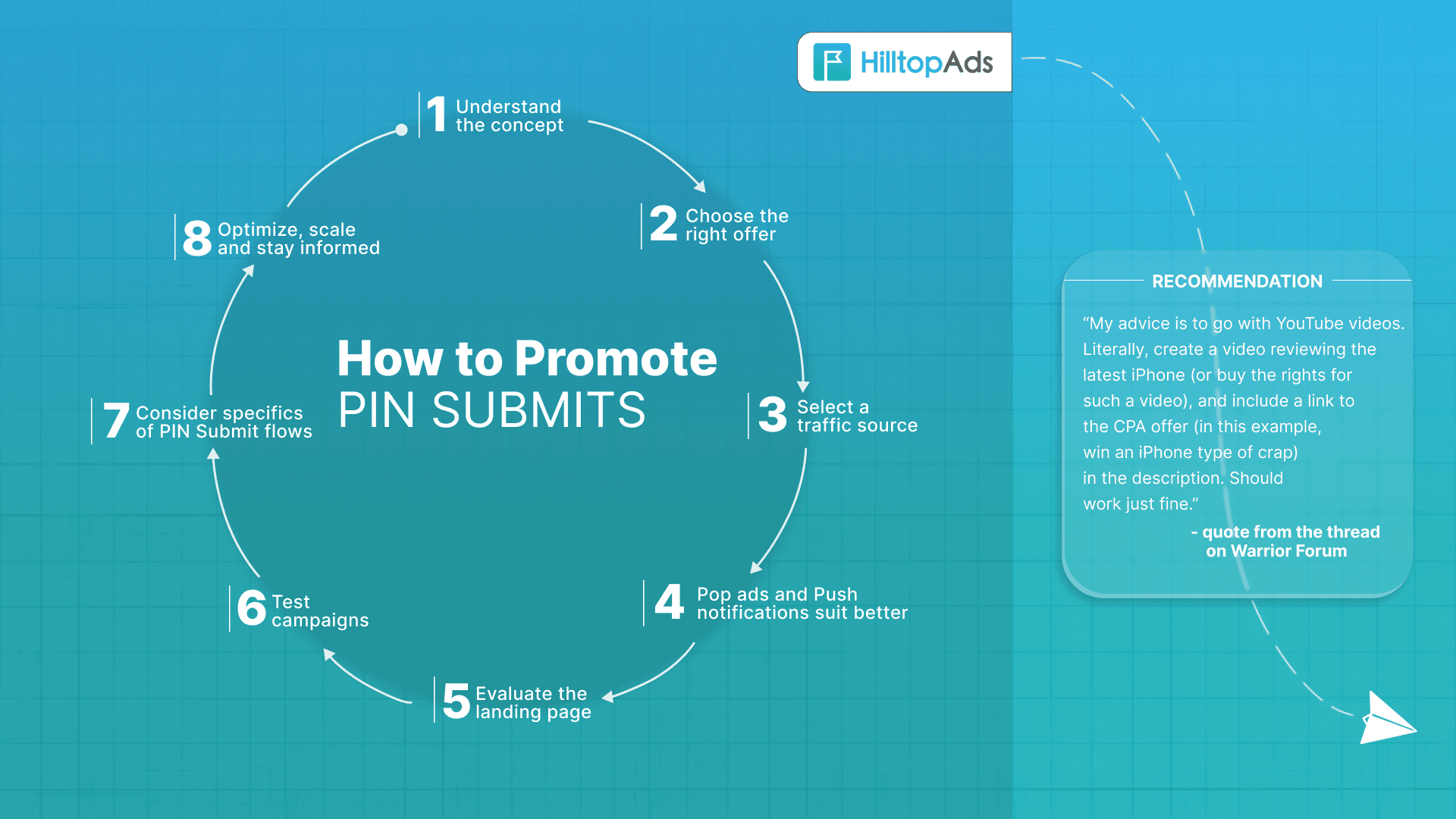
A thread on Warrior Forum, which we recommend visiting as well as other top-10 forums, states the following:
“My advice is to go with YouTube videos. Literally, create a video reviewing the latest iPhone (or buy the rights for such a video), and include a link to the CPA offer (in this example, win an iPhone type of crap) in the description. Should work just fine.”
That’s a great suggestion for those of you running video ads. Don’t worry, if you prefer other ad formats, we have more promotional tips & hints.
- Understand the concept: PIN Submit requires the user to subscribe for paid content through their mobile carrier.
- Choose the right offer: look for PIN Submit offers that are likely to excite users and have broad appeal, such as Astrology, Dating apps, Cams, Adult, Wallpapers, Lotteries, or TV series. Ensure the offer is popular in your target country and compatible with Android devices for better CR.
- Select a traffic source: opt for an advertising network that can provide substantial and relevant traffic for your offer. Consider platforms like HilltopAds, which offer intelligent traffic estimation tools to analyze competition and assess campaign effectiveness.
- Pop ads and Push notifications suit better: these ad formats are among the most affordable. Plus, they are hard to miss and persuasive when it comes to offering a chance at winning something, e.g., a new iPhone.
- Evaluate the landing page: examine the landing page provided by the advertiser to ensure it is engaging and persuasive. A compelling landing page aligned with your creatives and pre-landers can significantly impact CR.
- Test campaigns: conduct split tests using pre-landers and direct linking to gauge effectiveness. Monitor conversions closely in the initial hours of campaign launch and adjust creatives, targeting, and bids as needed to optimize performance.
- Consider specifics of PIN Submit flows: familiarize yourself with different PIN Submit flow types, such as MSISDN, MO, and MT flows. Go to the “Types of PIN Submits” if you’ve missed this part.
- Optimize and scale: continuously optimize your campaigns by adjusting bids, refreshing creatives, and expanding to new geographies or traffic types. Seek advice from your network manager and leverage advanced optimization tools to maximize ROI.
- Stay informed: keep abreast of industry trends and best practices in mobile content advertising. Experiment with new strategies and techniques to stay ahead of the competition and drive successful PIN submit campaigns.
Conclusion
PIN Submits offer a straightforward yet potentially lucrative avenue in affiliate marketing. They involve users entering a PIN to complete actions, often related to mobile subscriptions. While they may present conversion challenges compared to other methods, strategic promotion and understanding of various flows can yield significant returns. Adhering to regulatory guidelines, selecting the right offer, and optimizing campaigns are key to success in this space.
With HilltopAds by your side, you can get the best quality traffic for your marketing needs. We’re not afraid to promote any kind of submits, because there is a huge profit potential hidden for both publishers and advertisers. Contact us for assistance, follow the terms & conditions, and may your profit skyrocket.
